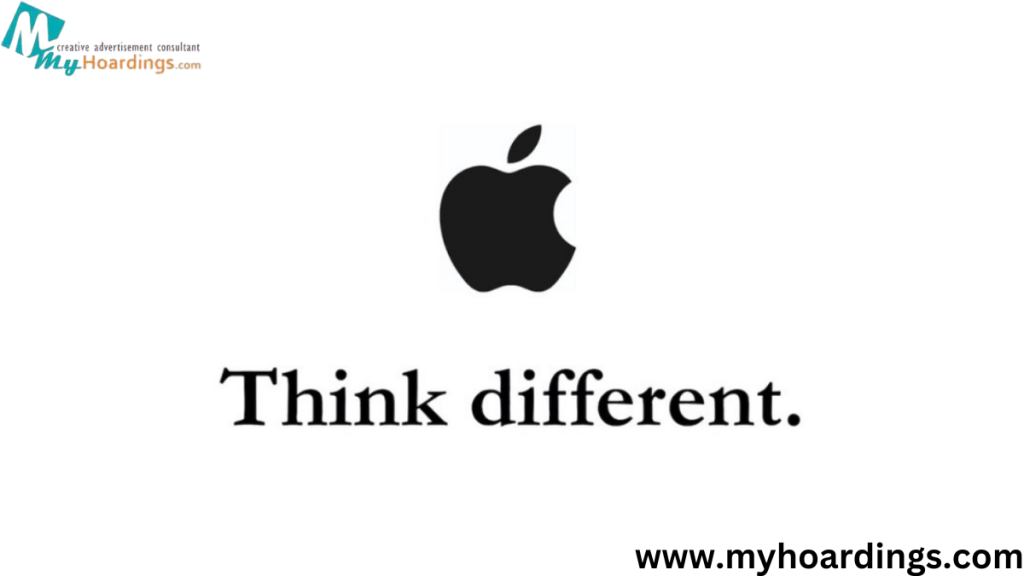Apple’s Think Different Campaign: Revolutionizing Brand Identity in 1997
In 1997, Apple launched its iconic “Think Different” campaign, a pivotal moment in advertising history that would not only redefine the brand but also influence the way technology companies communicate with consumers. At a time when Apple was struggling to regain its footing in the tech industry, this campaign emerged as a powerful declaration of innovation, creativity, and individuality.
The Context: Apple’s Struggles
By the mid-1990s, Apple was facing significant challenges. The company’s market share was dwindling, and it was in dire need of a strong comeback. The tech landscape was dominated by Microsoft, and Apple needed to reestablish its identity and differentiate itself from competitors. The company sought to connect with a new generation of consumers who valued creativity and innovation, making the “Think Different” campaign a timely initiative.
The Concept: Celebrating the Misfits
The “Think Different” campaign was conceptualized by the advertising agency TBWA\Chiat\Day. The central theme of the campaign was to celebrate the misfits, the rebels, and the nonconformists—those who dared to think differently and challenge the status quo. It was a call to action for individuals to embrace their creativity and push the boundaries of what was possible.
The campaign featured a series of black-and-white television commercials and print ads, showcasing iconic figures such as Albert Einstein, Martin Luther King Jr., Mahatma Gandhi, and John Lennon. These individuals were depicted as pioneers of thought and change, reinforcing Apple’s message that innovative thinking could change the world.
The Execution: A Masterclass in Storytelling
The execution of the “Think Different” campaign was nothing short of brilliant. The ads were visually striking, featuring powerful imagery and a compelling voiceover that spoke directly to the audience. The famous tagline, “Think Different,” was simple yet profound, encouraging consumers to associate Apple with innovation and creativity.
The campaign’s aesthetic was clean and minimalistic, reflecting Apple’s design philosophy. By positioning itself alongside historical figures known for their transformative ideas, Apple successfully aligned its brand with the values of innovation and inspiration. The combination of powerful storytelling, striking visuals, and emotional resonance made the “Think Different” campaign unforgettable.
The Impact: A Brand Resurgence
The “Think Different” campaign had an immediate and lasting impact on Apple’s brand perception. It resonated deeply with consumers, fostering a sense of loyalty and connection. The campaign marked a turning point for Apple, as it began to regain market share and redefine its identity in the tech world. Sales of Apple products, particularly the iMac, surged, solidifying the brand’s resurgence.
Moreover, the campaign revitalized Apple’s image as a leader in innovation and creativity, setting the stage for future successes, including the launch of the iPod, iPhone, and iPad. The “Think Different” campaign became a foundational element of Apple’s brand identity, influencing its marketing strategies for years to come.
Lessons for Modern Brands
Apple’s “Think Different” campaign serves as a timeless reminder of the power of storytelling and emotional connection in advertising. It highlights the importance of aligning brand values with the aspirations of consumers. By celebrating individuality and creativity, Apple was able to foster a community of loyal customers who identified with the brand’s mission.
At MyHoardings, we recognize the significance of creating impactful narratives that resonate with audiences. Whether you’re launching a new product or looking to rebrand, we can help you develop creative campaigns that inspire and engage.
For innovative advertising solutions that capture the essence of your brand, contact us:
- Email: business@myhoardings.com
- Phone: +91-9953847639
- Website: www.myhoardings.com
Let’s work together to create campaigns that encourage your audience to think differently.

